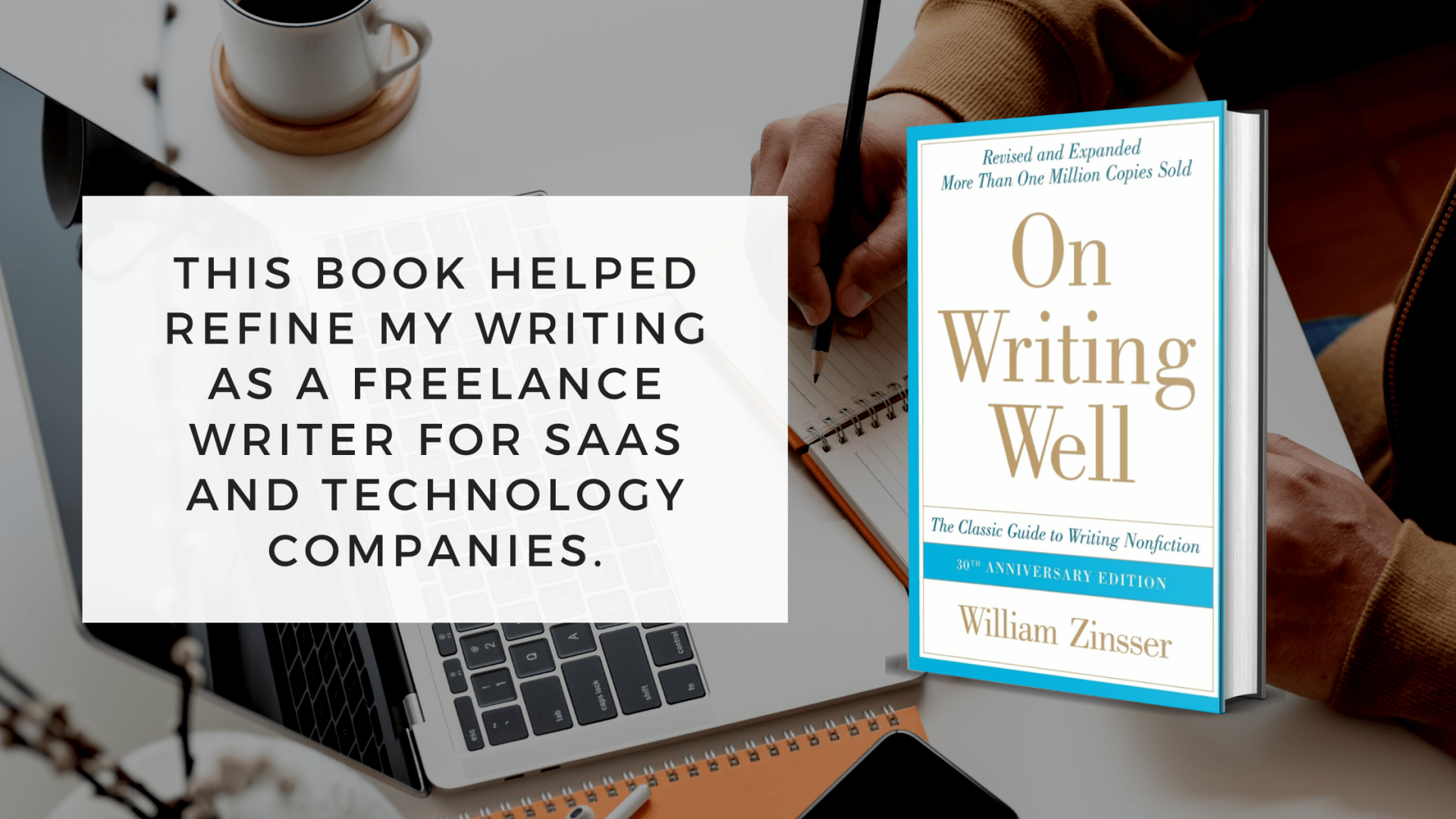This book helped with freelance writing for SaaS companies.

Recently, I read the book On Writing Well: The Classic Guide to Writing Nonfiction by William Zinser. It gives excellent no-nonsense advice about writing non-fiction. Even though the book is from 1976, the book’s core lessons relate well to writing online content.
I want to walk through a few of the lessons I learned from the book and how you can apply the lessons to writing for SaaS businesses.
Write for your audience in a simple to understand way.
“Don’t dialogue with someone you can talk to.”
A big theme in the book is to write simply. Don’t try to overcomplicate your language. This is a good lesson when writing for all types of businesses, but I feel strongly about this in the SaaS field. SaaS companies need to make their software feel effortless to their potential customers. So the best way to do this is to produce web copy and content that feels effortless. Explain the technology, but make sure your customer understands it. Lead them to believe it will make their life easier. As Zinser says, “Don’t dialogue with someone you can talk to.” He means, using the word “talk” is perfectly acceptable. Keep it simple.
Less is more.
“Most first drafts can be cut by 60 percent without losing any information or losing the author’s voice.”
You can remove more than you think, and you don’t have to achieve some magical word count. As online writers, we can get caught up in trying to fulfill a magic formula for SEO. But in reality, Google rewards content that is the most useful. So take out what isn’t necessary, and it will strengthen your message.
Use first-person to demonstrate the humanity in your writing.
“Writing is an intimate transaction between two people, conducted on paper, and it will go well to the extent that it retains its humanity.”
Zinser made it a point to emphasize the first person. He says his students were terrified to use the first person. This goes back to how students can be programmed to write in specific ways. A writer needs to use the right tools for the job. Sometimes it is acceptable to write in the first, second, or third person. But you need to understand your audience.
You need to form a connection with your reader. If you’re acting as a problem solver in the SaaS world, then first-person can help develop a connection with your customer. Zinser explains, “You can take much of the mystery out of science writing by helping the reader to identify with the scientific work being done.” Explain your “why,” and make it personal.
Don’t use jargon.
“Of the 701 words in Lincoln’s Second Inaugural Address, a marvel of economy in itself, 505 are words of one syllable and 122 are words of two syllables.”
No one wants you to talk over their head. Connect with your audience by reaching them at their level. Zinser hates words like “impact” and “prioritize.” In today’s world, tech companies use a lot of acronyms. Stop. Don’t assume your audience knows, and don’t exclude people by using jargon. You can demonstrate your authority without jargon.
Write short paragraphs to give your readers a break.
“Short paragraphs put air around what you write and make it look inviting, whereas a long chunk of type can discourage a reader from even starting to read.”
William Zinser understood the internet before the internet was even around. If your writing is clutter-free and every word on the page matters, give it some space. White space can be refreshing for your readers. It allows them to feel like they can read a page of text.
It also gives your mind a break to let critical points sink in.
See what I did there?
Don’t worry about the final product, but instead worry about good organization.
“Figure out what you want to do and how you want to do it, and work your way with humanity and integrity to the completed article.”
This can come up a lot when you write for other people. The finished product becomes your central goal. Obviously, a client is paying you for a product. But often, the finished product can change if the concept is ill-conceived.
Instead, work on constructing an outline that provides integrity to the content that you are producing. A well-organized piece of content will be more valuable than a keyword-stuffed article that doesn’t help out the audience.
Write for yourself to develop a style, and the audience will come.
I found this assertion by Zinsser to be more of a hot take in the freelance world. But I agree with it. You need to develop your style to bring additional value to your customers. This comes from writing content that you would actually want to read. Don’t write what you think your client wants, but rather trust that your client hired you because they trust your expertise and voice.
Are you still struggling with developing a style? I can help. I help companies produce engaging content that their audience wants to read. Check out more about the
content writing services I offer.


